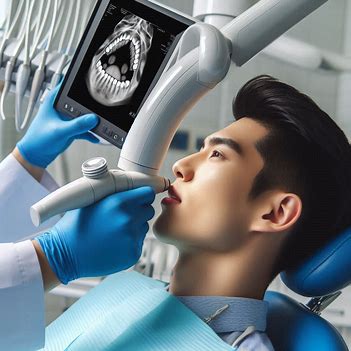Digital Dentistry and the Dental Team: How Technology and Education Are Transforming Oral Care

Statistics show that more than 3.5 billion people worldwide live with oral diseases according to the World Health Organization. Many of these conditions are preventable with the right care and education. This growing need for better dental health has inspired professionals across the field to combine advanced technology with community outreach. The rise of digital dentistry has created a new era where general dentists, hygienists, orthodontists, periodontists, and other specialists work together to provide more precise treatments and to teach patients how to protect their smiles for life.
Across clinics and teaching centers, technology is now a central tool that supports not just treatment but also public education. Modern practices such as Dr. Dilnoza Hojaeva at Dentazure show how digital imaging, 3D scanning, and computer-guided planning help professionals explain conditions and treatment options to patients. This approach makes care less intimidating and allows people to see exactly what is happening inside their mouths. By combining these tools with open conversations, dental professionals help individuals understand the importance of preventive habits like regular brushing, flossing, and routine check-ups.
The Role of General Dentists and Hygienists
General dentists and dental hygienists are often the first line of defense for oral health. They perform routine check-ups, cleanings, and basic restorative procedures. With digital X-rays and intraoral cameras, these professionals can show patients high-resolution images of cavities, plaque, or gum inflammation. This makes education more visual and immediate. Dental hygienists, in particular, spend time teaching proper brushing and flossing techniques, helping patients build habits that reduce the risk of future problems.
Orthodontists and Periodontists Embracing Technology
Orthodontists and periodontists use advanced digital tools to customize care for each patient. Clear aligner systems and 3D-printed models allow orthodontists to plan treatments that are more comfortable and predictable than traditional braces. Periodontists, who focus on the gums and supporting structures, rely on digital imaging to detect early signs of gum disease and to plan minimally invasive surgeries. These specialists also create outreach programs in schools and communities, showing young people the link between gum health and overall wellbeing.
Endodontists, Prosthodontists, and Oral Surgeons in the Digital Era
Specialists who perform complex procedures also benefit from digital dentistry. Endodontists use 3D imaging to locate tiny root canals and treat infections more accurately. Prosthodontists design crowns, bridges, and dentures using computer-aided design, which reduces turnaround time and improves fit. Oral and maxillofacial surgeons employ virtual surgical planning to prepare for extractions, implant placements, and corrective jaw operations. This precision helps reduce patient discomfort and speeds up recovery, while detailed visualizations educate patients about what to expect before, during, and after their procedures.
Education as a Shared Mission
Beyond treatment, dental professionals are increasingly taking their expertise into the community. Many clinics host free seminars, school visits, and online webinars to spread awareness about oral health. They use social media, animated videos, and digital presentations to make topics like cavity prevention and nutrition more engaging. This educational effort creates informed patients who can make better choices for themselves and their families.
Benefits for Patients and Communities
- Early Detection: Digital imaging helps spot issues before they become major problems.
- Less Anxiety: Visual explanations reduce fear and confusion about dental procedures.
- Customized Care: 3D planning ensures treatments fit each patient’s unique needs.
- Stronger Habits: Outreach and education inspire healthier daily routines.
The Continuing Transformation
The digital revolution in dentistry is not slowing down. Artificial intelligence is emerging to assist with diagnosis, while new scanning systems make it possible to capture full-mouth images in seconds. These advances allow every member of the dental team to work more efficiently and collaboratively. Patients benefit from shorter appointments, clearer communication, and more predictable outcomes.
READ ALSO: Digital Health Records in Dentistry: Enhancing Patient Care in Surrey
Conclusion
The combination of technology and education is changing how people experience dental care. General dentists, hygienists, and specialists alike are building a future where treatment is precise and preventive habits are part of everyday life. Practices such as those led by Dr. Dilnoza Hojaeva show that when dental professionals embrace digital tools and public education, they create a stronger foundation for community health. Digital dentistry and the dental team together are transforming oral care into an experience that empowers patients, reduces fear, and protects smiles for generations.




